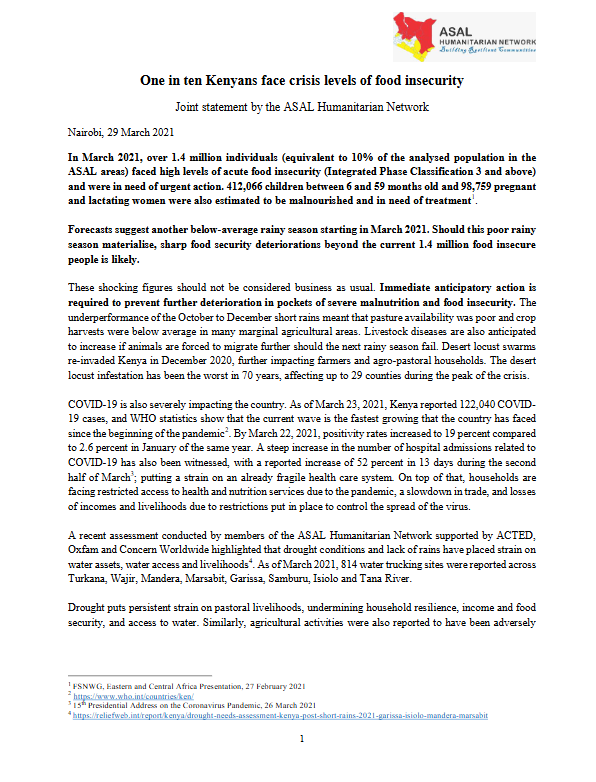ASAL Humanitarian Network (AHN)
ASAL Humanitarian Network – Early Warning and Preparedness Advocacy
One in Ten Kenyans Face Crisis Levels of Food Insecurity Amid Drought, Locusts and COVID-19
Joint Advocacy Statement – March 2021
On 29 March 2021, the ASAL Humanitarian Network (AHN) issued a joint advocacy statement warning that 1.4 million people—equivalent to 10% of the population in Kenya’s ASAL counties—were already facing crisis levels of acute food insecurity (IPC Phase 3 and above). The statement called for urgent anticipatory action to prevent further deterioration, as forecasts indicated yet another below-average long rain season.
The alert drew attention to the compounding crises facing Kenya’s drylands:
Below-average short rains (Oct–Dec 2020) leading to poor harvests and depleted pastures.
Desert locust infestations, the worst in 70 years, affecting up to 29 counties.
Rising COVID-19 infections (positivity rate reaching 19%), straining health systems and cutting household incomes.
Widespread water stress, with 814 active water trucking sites reported across Turkana, Wajir, Mandera, Marsabit, Garissa, Samburu, Isiolo, and Tana River.
The statement underscored that drought, locusts, and the pandemic were collectively undermining pastoral livelihoods and household resilience. It urged:
County governments to allocate resources for preparedness and resilience-building.
National government to invest in early action mechanisms and safeguard food security.
Humanitarian donors to fund contingency plans and support local response coordination.
This was AHN’s first major policy appeal linking climate shocks to systemic governance and resilience gaps. It established the groundwork for the July 2021 Drought Emergency Statement and the subsequent #DroughtKE21 campaign, cementing AHN’s leadership in locally led early warning and advocacy across Kenya’s ASAL region.

